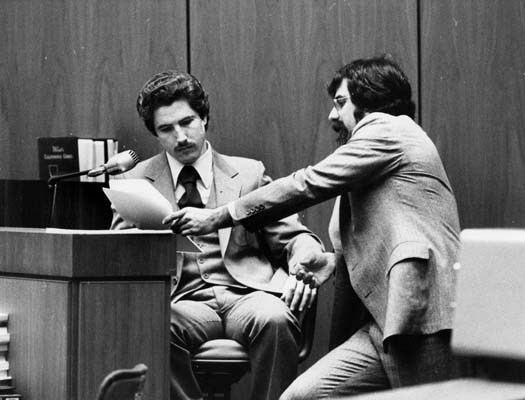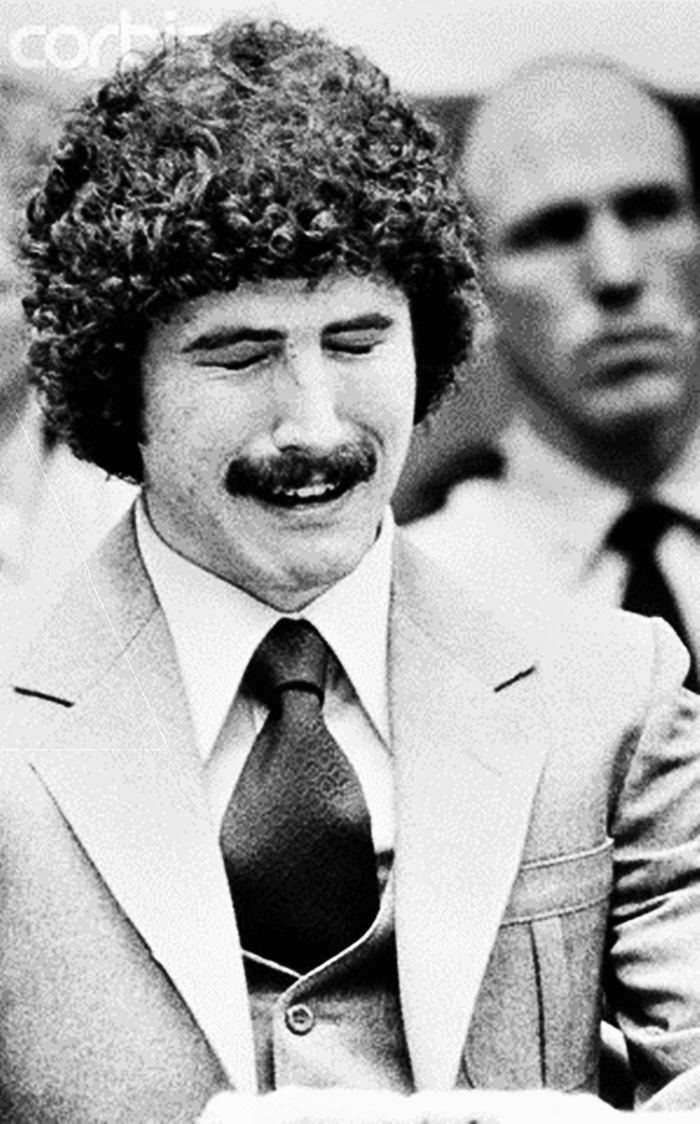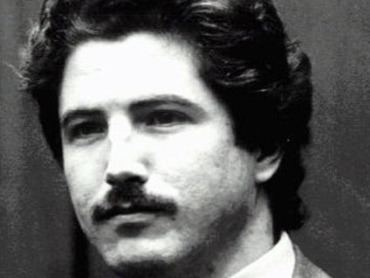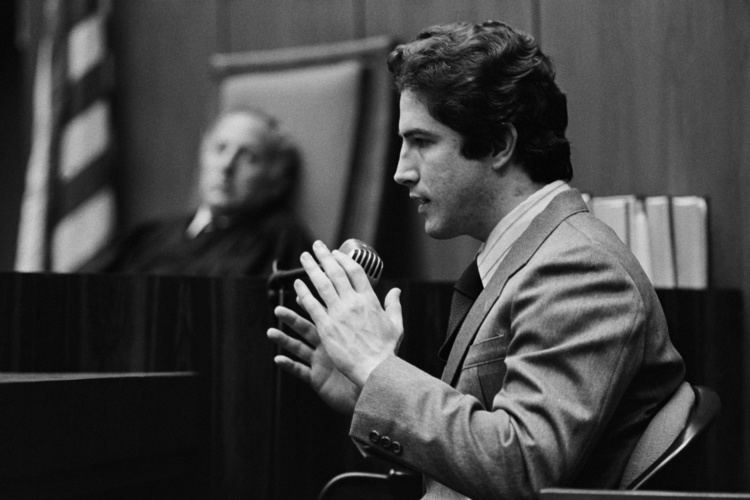Name Kenneth Bianchi | Victims 12 Children Sean Bianchi | |
 | ||
Full Name Kenneth Alessio Bianchi Span of killings October 16, 1977–January 11, 1979 Parents Frances Scioliono, Nicholas Bianchi Similar People Angelo Buono - Jr, David Berkowitz, Richard Ramirez, Henry Lee Lucas, John Wayne Gacy | ||
Other names The Hillside Strangler Date apprehended January 12, 1979 Education Monroe Community College | ||
Kenneth bianchi hillside strangler a serial killer under the microscope part 3
Kenneth Alessio Bianchi (born May 22, 1951) is an American serial killer, kidnapper, and rapist. He is also known for the Hillside Strangler murders along with his cousin Angelo Buono in Los Angeles, as well as having murdered two more women in Washington by himself. He is currently serving a sentence of life imprisonment in Washington State Penitentiary for these crimes.
Contents
- Kenneth bianchi hillside strangler a serial killer under the microscope part 3
- Descontructing the Link between the Kenneth Bianchi and Doug Clark
- Early life
- Murders
- Trial
- References

Bianchi is also a suspect in the alphabet murders, three unsolved murders in his home city of Rochester, New York.

Descontructing the Link between the Kenneth Bianchi and Doug Clark
Early life

Kenneth Alessio Bianchi was born on May 22, 1951, in Rochester, New York to an alcoholic prostitute who gave him up for adoption two weeks after he was born. He was adopted in August 1951 by Nicholas Bianchi and his wife Frances Scioliono-Bianchi, who was Angelo Buono's mother's sister, and was their only child.

Bianchi was deeply troubled from a young age, his adoptive mother described him as being "a compulsive liar" from the time he could talk and that he "had risen from the cradle dissembling". He would often fall into trance-like daydreams where his eyes would roll back into his head and he would be inattentive, a physician diagnosed the 5-year-old Bianchi with petit mal seizures due to these symptoms. Bianchi would also make frequent trips to the doctors because of an involuntary urination problem. The doctors examined his genitals in an attempt to diagnose the issue, and this caused him a great deal of humiliation. Bianchi had many behavioral problems and was prone to fits of anger; his mother responded by taking him to a psychiatrist multiple times, with Bianchi being diagnosed with a passive-aggressive personality disorder at the age of 10. Bianchi's IQ was measured at 116 at the age of 11, but, despite having above-average intelligence, he was an underachiever and was moved twice from schools due to not getting along with his teachers. His mother described him as "lazy", and his teachers claimed that he was working below his capacity.
Nicholas Bianchi died suddenly from pneumonia in 1964, and the young Kenneth Bianchi refused to cry or show any other signs of grief. Due to her husband's death, Frances had to work while her son attended high school and was known for keeping Bianchi home from school for long periods of time. Shortly after Bianchi graduated from Gates-Chili High School in 1971, he married his high school sweetheart; the union ended after eight months. Supposedly, she left him without an explanation. As an adult, he dropped out of college after one semester and drifted through a series of menial jobs, finally ending up as a security guard at a jewelry store. This gave him a great opportunity to steal valuables, which he often gave to girlfriends or prostitutes to buy their loyalty. Because of many petty thefts, Bianchi was constantly on the move.
He moved to Los Angeles in 1977 and started spending time with his older cousin, Angelo Buono, who impressed Bianchi with his fancy clothes, jewelry, and talent for getting any woman he wanted and "putting them in their place". Before long, they worked together as pimps, and, by late 1977, had escalated to murder. They had raped and murdered ten women by the time they were arrested in early 1979.
Murders
Bianchi and Buono would usually cruise around Los Angeles in Buono's car and use fake badges to persuade women that they were undercover police officers. Their victims were women and girls aged 12 to 28 from various walks of life. They would then order the victims into Buono's car, which they claimed was an unmarked police car, and drive them to Buono's home to torture and murder them. The victims were:
Just prior to the first of these murders the lead investigators were seeking out a Charlene Dryer then law student and current attorney in California. They were trying to find her because she had purchased a used cadillac from Bianchi in the weeks before the murders began and it was believed that she may have been the catalyst for Bianchi to commit these crimes, according to a source at the Los Angeles police depatrment.
Both men would sexually abuse their victims before strangling them. They experimented with other methods of killing, such as lethal injection, electric shock, and carbon monoxide poisoning. Even while committing the murders, Bianchi applied for a job with the Los Angeles Police Department (LAPD) and had even been taken for several rides with police officers while they were searching for the Hillside Stranglers.
One night, shortly after they botched their would-be eleventh murder, Bianchi revealed to Buono he had participated in LAPD police ride-alongs, and that he was currently being questioned about the Hillside Stranglers case. Buono flew into a rage and threatened to kill Bianchi if he did not move to Bellingham, Washington. In May 1978, Bianchi moved to Bellingham.
On January 11, 1979, working as a security guard, Bianchi lured two female students into a house he was guarding. The women were 22-year-old Karen Mandic and 27-year-old Diane Wilder, both students at Western Washington University. He forced the first student down the stairs in front of him and then strangled her. He murdered the second woman in a similar fashion. Without help from his partner, he left many clues, and police apprehended him the next day. A California driver's license and a routine background check linked him to the addresses of two Hillside Strangler victims.
Following his arrest, Bianchi admitted that in 1977 he and Buono, while posing as police officers, stopped a young woman called Catharine Lorre with the intention of abducting and killing her. But after learning she was the daughter of actor Peter Lorre, they let her go. Only after the men were arrested did Catharine learn of their identities.
Trial
At his trial, Bianchi pleaded not guilty by reason of insanity, claiming that another personality, one "Steve Walker", had committed the crimes. Bianchi even convinced a few expert psychiatrists that he indeed suffered from multiple personality disorder, but investigators brought in their own psychiatrists, mainly Martin Orne. When Orne mentioned to Bianchi that in genuine cases of the disorder, there tends to be three or more personalities, Bianchi promptly created another alias, "Billy". Eventually, investigators discovered that the name "Steven Walker" came from a student whose identity Bianchi had previously attempted to steal for the purpose of fraudulently practicing psychology. Police also found a small library of books in Bianchi's home on topics of modern psychology, further indicating his ability to fake the disorder. Once his claims were subjected to this scrutiny, Bianchi eventually admitted that he had been faking the disorder. He was eventually diagnosed with antisocial personality disorder with sexual sadism.
To acquire leniency, Bianchi agreed to testify against Buono. However, in giving his testimony, Bianchi made every effort to be as uncooperative and self-contradictory as possible, apparently hoping to avoid being the ultimate cause of Buono being convicted. In the end, Bianchi's efforts were unsuccessful, as Buono was convicted and sentenced to life imprisonment.
In 1980, Bianchi began a relationship with Veronica Compton, a woman he had met while in prison. During his trial, she testified for the defense, telling the jury a false, vague tale about the crimes in an attempt to exculpate Bianchi and also admitting to wanting to buy a mortuary with another convicted murderer for the purpose of necrophilia. She was later convicted and imprisoned for attempting to strangle a woman she had lured to a motel in an attempt to convince authorities that the Hillside Stranglers were still on the loose. Bianchi allegedly had given her some semen during a prison visit for her to use in order to make it look like a rape/murder committed by the Hillside Stranglers.
In 1992, he sued Catherine Yronwode for US$8.5 million for having an image of his face depicted on a trading card; he claimed his face was his trademark. The judge dismissed the case after ruling that, if Bianchi had been using his face as a trademark when he was killing women, he would not have tried to hide it from the police.
Bianchi is serving his sentence at Washington State Penitentiary in Walla Walla, Washington.
He was denied parole on August 18, 2010 by a state board in Sacramento (according to Los Angeles County District Attorney's office spokeswoman Sandi Gibbons). He will be eligible to apply for parole again in 2025.
